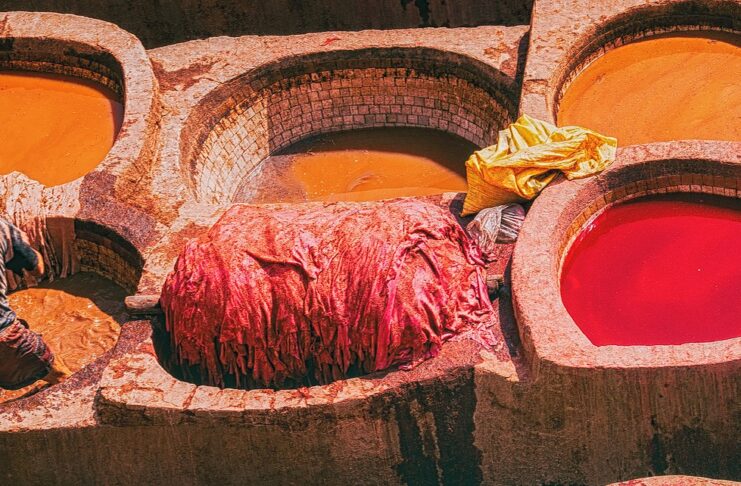Teen Vogue tells its teenage readers that going back to farming our dyes for clothes is the way to save the planet. This is not just hopelessly wrong. It's dangerously wrong. Farming produces vastly more emissions and much less land left for wildlife than synthetic dyes. This is all a part of the insistence that doing things the “natural” way is better. But it isn't – there's a reason our ancestors changed from natural to artificial, from fields to factories.
The complaint is that fashion has emissions – sure, so does being alive. There's much worrying about polyester and that it's derived from oil. OK – but it's not oil being burnt; it's oil (actually, usually, natural gas) being made into fabrics. The emissions come from the energy to drive the process, not the chemistry itself. Unlike burning fossil fuels, if the power came from renewables, then there would be few emissions from making polyester.
But the biggest example for us here of desperately harmful misinformation is this:
Aldighieri worries that at current production levels — by some estimates, the fashion industry produces over a billion jeans globally per year — growing enough indigo plants to replace the approximately 80,000 metric tons of synthetic indigo produced a year would take away farmland from food crops. A similar question has dogged bio-plastics.
But Dillinger pushes back against that narrative, pointing out that farmers growing indigo for Stony Creek Colors are switching away from tobacco, a non-necessary crop.
That's missing the point entirely. Back when we did use plants to provide indigo – before jeans, this was too – “The demand for indigo in the 19th century is indicated by the fact that in 1897, 7,000 km2 (2,700 sq mi) were dedicated to the cultivation of indican-producing plants, mainly in India. By comparison, the country of Luxembourg is 2,586 km2 (998 sq mi).” Yes, Luxembourg is a small country, India a large one. But using nearly three country's worth of land to produce “natural” dyes is not going to do the planet much good.
This is what the danger is here about these stories being told at Teen Vogue. Yes, we desire to reduce the impact of civilization on the environment. Yes, dealing with climate change is a very good idea indeed. But it isn't true that “natural” or even “organic” is the way to do it. Things made in factories out of minerals often – not always, but often – have less effect on the environment and climate than plowing up vast areas of land to produce organic and natural products.
It simply isn't true that “natural” is better for the planet. And telling the teens that it is both lies to them and also damages the planet itself. Sure, it's great for the folk selling the natural products, but that's not quite the point of what we're trying to do.
We do grasp the marketing power of “natural” in this modern world. But we also insist that those attempting to “Educate the influencers of tomorrow,” which is Teen Vogue's stated goal, have a duty to actually educate. Natural is not necessarily better for the environment. Telling the kids that both misleads them and makes the world worse, not better, when they act out on that disinformation.
We have a radical idea here. Tell the teens the truth. Who knows, the world might improve if we did.
The opinions expressed in this article are those of the author and do not necessarily reflect the positions of American Liberty News. This article was first published by Accuracy In Media.



The best way for impressionable youth to have a greener, more environmentally friendly planet in the future is to feed environmental activists to meat-eating carnivores in all the zoos across the planet.
And to study REAL science, NOT the green-washing/brain-washing type spewed forth by complete and total whack jobs.
Why is there no longer any checks and balances from the wacko lefties who push this nonsense on our young?
Does anybody know by now how much gutter leaf guards cost? HA! One thing to note about the leaf guard videos is that their water is falling straight down onto the guard/gutter. How often does rain fall straight down? It runs off the slope of the roof and slides right off the gutter cover to the ground below. The more slope to the roof the faster it runs over the gutter cover. Yes, so do leaves and pine needles but not water.
“The King is in his all-together.”
After reading the statement in the article, that “OK – but it’s not oil being burnt; it’s oil (actually, usually, natural gas) being made into fabrics.”, I took far too long searching for how fabric is made from natural gas. I found only the process of turning natural gas into something other than gas, and that was into a liquid fuel. There are other issues with this article.
But be that as it may, I would really like to know how this author conceives gas being made into fabric.
We’ll all be “… as naked as the day that [we] were born.”
— Quotes from Moss Hart & Frank Loesser’s “Hans Christian Andersen”, MGM 1952